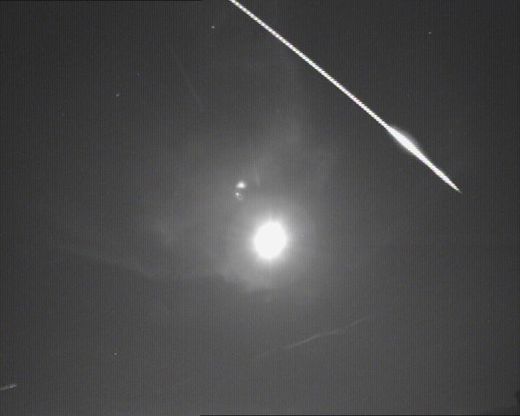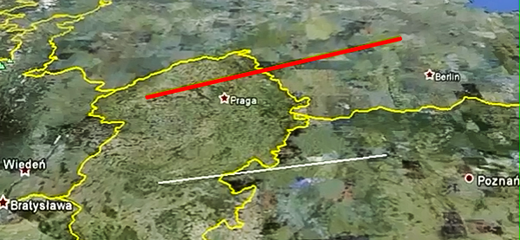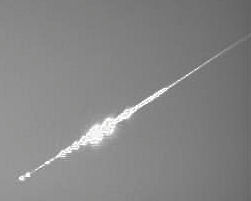This phenomenon took place on 6 November at 5:38:19 p.m. local time. The fireball flew nearly directly south from the region of Poznan toward the Czech Republic. It reached its maximum brightness over a village of Lukova in the Czech Republic. Average brightness was of -3 magnitude and in outbursts it reached up to -5.5. The meteor appeared at an altitude of 130 km and burnt up at 95 km. Its flight lasted almost 4 seconds.
It was a sporadic meteor of cometary origin and was travelling very fast. Its velocity was up to 65 km/sec.
The phenomenon was registered by the Polish Fireball Network in Chelm, Otwock, Twardogora, Urzedowo and Krakow.

A comment left on the PKiN website:The following day, 7 November, saw another interesting phenomenon picked up by the Polish Fireball Network.
Confirmed in Berlin
Submitted by amoeller on wt., 2011-11-08 09:19.
Hi guys,
I can confirm a seeing this from Berlin (Germany).
My exact location was: Motorway A10 - East Berlin ring (direction south).
Excactly at 16:38 UT a fireball dived the earth from south to north. It passed the moon from the right site.
Greetings from Germany,
Andreas
Due to its early timing, some cameras were not yet working, however three stations (PFN20, PFN24 and PFN37) registered the visitor. The fireball was not travelling very fast and had an initial velocity of 25.1 km/s, flying between Lodz and Warsaw. The length of the fireball track was 75 km, with the maximum brightness reached over Zyrardow.
The phenomenon was somewhat unusual. A number of flashes indicates its cometary nature, the orbit was clearly elliptical with aphelion between Jupiter and Saturn. On the other hand, its initial and final altitudes (87 km and 57 km) indicate a body of a slightly bigger density. It could have been a carbonaceous chondrite.
More pictures can be seen on the PKiM website:
Meteor of November 6
Meteor of November 7





Reader Comments
to our Newsletter